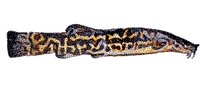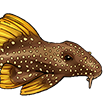Abiola, M. O., Omoregbee, F. E., Okogba, G. A., & Adeyeye, J. A. (2019). The role of women in catfish marketing value addition in Egor Local Government Area of Edo State. Gender and Behaviour, 17(2), 13193-13200.
https://www.ajol.info/index.php/gab/article/view/188031
ABSTRACT
The study examined the role of women in catfish marketing value addition in Egor Local Government Area of Edo State, Nigeria. Multistage sampling technique was used to select four communities: Isihor, Evbomore, Ekheoba and Odigi. This was followed by random sampling of one central market in each community and fifteen respondents were sampled randomly from each central market in each community giving a total sample size of sixty respondents. Data were analyzed using mean, percentages gamma, chi square and Pearson product moment correlation. The result indicated that women created value addition through processing, preservation, packaging of catfish and location and time value addition through storage of dried catfish and hawking along the road. The outcome indicated that women played a vital role in catfish marketing value addition in the studied areas. It is recommended that catfish can be used as women empowerment programme through training on value addition and establishment of each value addition point as small business for unemployed women.
- Keywords: Value Addition, Catfish, Women
Also this paper is certainly linked:
Omoregbee, F. E., Abiola, M. O., & Okogba, G. A. (2019). Characteristics of Catfish Marketing in Egor Local Government Area of Edo State, Nigeria. J. of Agricultural Extension, 123(2): 163-172. https://dx.doi.org/10.4314/jae.v23i2.17
https://www.ajol.info/index.php/jae/art ... 114/174836
ABSTRACT
The study examined the characteristics of catfish marketing in Egor Local Government Area of Edo State, Nigeria. Multistage sampling technique was used to select four communities: Isihor, Evbomore, Ekheoba and Odigi. This was followed by random sampling of one central market in each community and fifteen respondents were sampled randomly from each central market in each community giving a total sample size of sixty respondents. Data were analysed using mean, percentages gamma, chi square and Pearson product moment correlation. Results showed that 95% sourced their marketing information very often from catfish marketers/farmers and 70% sourced information from other marketers such as poultry or vegetable marketers. Only 11.42% had access to information on improved technology through extension agents while 56.3% derived their information from family members. Technologies adopted were clean-washing (96.7%), grading by size (95%) by weight (71.7%), by quality (81.7%), by source (85%), solar drying (88.3%), sorting (90%), hot smoking (93.3%) cold smoking (80%), and half drum smoking (91.7%). A positive significant relationship between respondents’ use of information channels and their intensity of performing catfish marketing functions was observed. The study established that extension service delivery was poor and newspaper, radio, magazine, bulleting, internets and cooperative society were not good source of information for improved catfish technologies in the study areas. Extension agent frequency of contacts with catfish farmers/marketers should be increased to improve extension service delivery and concentrate effort on those catfish technologies with low adoption.
- Key words: Extension service delivery, adoption of Improved catfish practices




